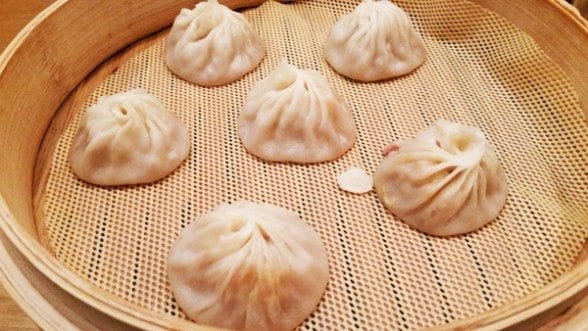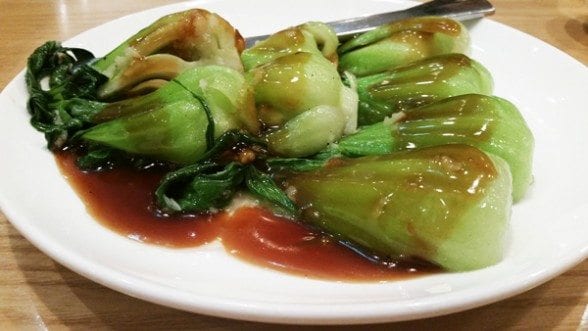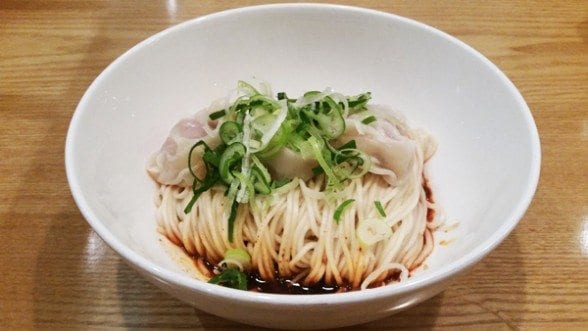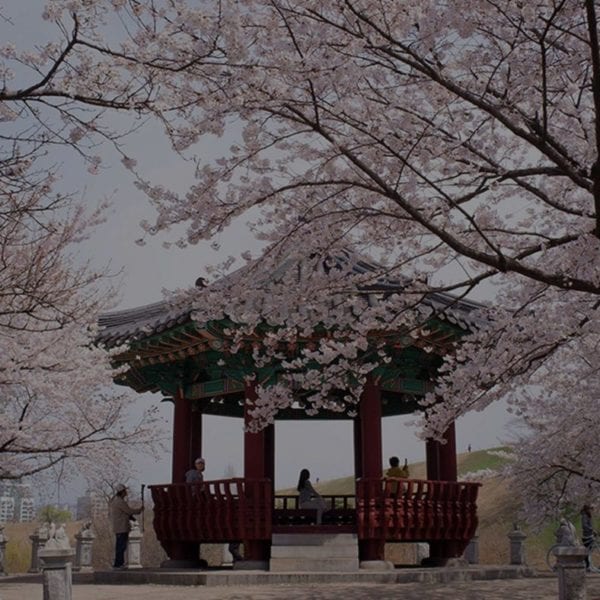Discover Korea’s incarnation of Din Tai Fung and their Xiaolongbao, variety of Dim Sum also known as “soup dumplings”

It’s their trademark dish for a reason.
10 Magazine does not notify restaurants that they are being reviewed and pays for all its meals.
Price: ₩₩
Thumbs up: Delicious “Soup Dumplings”
Thumbs down: Many dishes are weak on value for dollar
English: Menus only
Address: 6 different locations (Seoul: Myeongdong, Gangnam, Gimpo,, Yeongdeungpo, Busan, Suwon: Gwonseon-gu)
Hours: 11 am to 9 pm
Website: dintaifung.co.kr
Vegetarian Friendly: Not really
Handicap Accessible: Yes
Normally I’m not a fan of massive international chains. Once you reach a certain size, the unadulterated momentum pushing them to attain ever-increasing profits leads to decisions that increase revenue but hinder the dining experience. Striving to please the average palate is a sugar-laden quest for gastronomic mediocrity and the first casualty of this race is the quality of ingredients. That’s not to say that all chains suck, but that those which maintain superior standards are the exception rather than the rule.
Din Tai Fung is a delicious, unique dining experience, that does not escape the trappings of its own success. Originally from Taipei, Din Tai Fung has received accolades the world over for their signature Xiaolongbao (soup dumplings), a dish you’re not likely to find the equivalent of elsewhere domestically. It was named one of the top 10 restaurants in the world by the New York Times in 1993 and Hong Kong locations have received Michelin stars. They now have branches in the United States, Taiwan, Japan, Singapore, Australia, Indonesia, Malaysia, China, Thailand – and South Korea.
For today’s dining experience I was joined by my family, including my 1-year-old daughter. She was one of the main reasons we were here; one thing you can count on with big chains is high chairs for the young ones. After getting situated and opening the menu, we initially gave some thought to the combination sets claiming big discounts, but then realized that they all included some sugar-loaded drinks in addition to the food and, if you didn’t want those, there were no actual savings. Din Tai Fung dining guideline #1: Pass on the sets, order a la carte.

We ended up ordering two different sets of Xiaolongbao, the Crab Meat (W12,500 for 6) and the Pine Mushroom (W14,000 for 6) versions along with Sauteed Bok Choy with Oyster Sauce (W14,000), Spicy Shrimp & Pork Wonton (W11,000).
Service was quite impressive, largely thanks the table bell system and a responsive team. A server was at our table in seconds with every push. While not exactly warm and friendly, as we had a different person talking to us or delivering the food almost every time, we wanted for nothing during the entire meal.
One piece of information that doesn’t seem to make it into the literature, but that every seasoned “soup dumpling” diner will tell you; the flavor is packed in the juices of the dumpling. When removing your Xiaolongbao, take extra caution as if you’re not extremely careful you will rip open the dumpling cover and the delicious nectar will spill out leaving you with a steamed meatball wrapped in flour. After your first unadulterated Xiaolongbao pops open in your mouth and delivers your taste buds that burst of flavor, you will go to great lengths to prevent such a gastronomic breach from ever happening again.

The crab version was delicious, but the crab was such a subtle flavor that it was hard to distinguish from the original pork version which was substantially cheaper (W6,500 for 6). The pine mushroom incarnation, however, was absolutely worth trying. The Korean pine mushroom (the domestic version of the truffle) adds a unique flavor that you probably can’t get anywhere else in the world. I’m sure Din Tai Fung restaurants in the US don’t offer it. Sometimes fusion is a good thing.

The other dishes were lacking though. The bok choy was four little pieces halved and topped with a bland oyster sauce. If it cost them W1,000 to make I’d be surprised. The wonton noodle dish was spicy but lacked any other redeeming flavor. Both were unremarkable yet edible, but at W10,000 or W11,000, my wife and I felt they were overpriced. When the small Tsingtao beer came in at W8,000, the verdict was in. Din Tai Fung is suffering from symptoms of the “Great Chain Malady.”
I’m sure there are other quality dishes on the menu that we didn’t get to try, but I think Din Tai Fung guideline #2 will ensure a quality dining experience: Any trip to Din Tai Fung should center around their delicious signature dish, the Xiaolongbao.
Just before leaving, my wife and I split one more order of the Xiaolongbao – the inexpensive original pork this time. This “dessert” was just enough to redeem the meal and leave us satisfied with a nice evening dining out.



